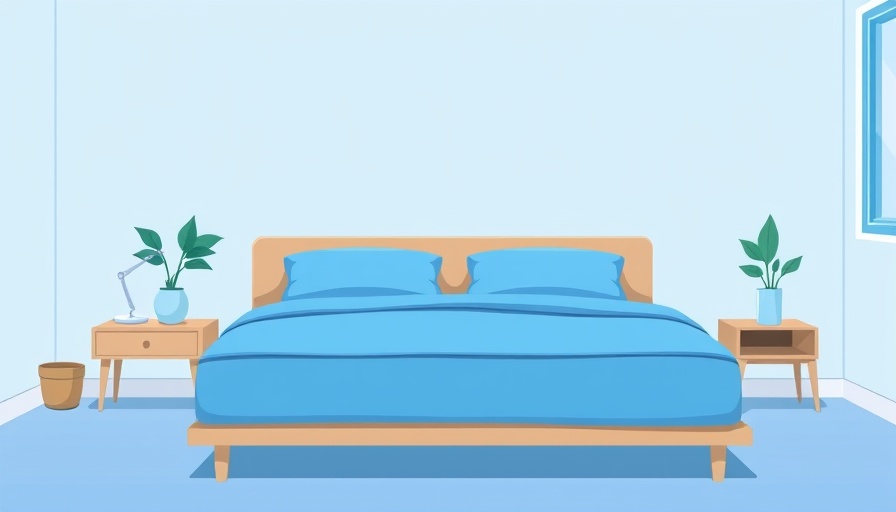
What You Didn’t Know About Sleep Hygiene
When thinkinig about bedroom cleanliness, often the focus is on visible surfaces like flooring, bedding, or clutter. However, a truly healthy sleep environment requires attention to often-overlooked items that can significantly impact sleep quality. Understanding the connection between cleanliness and sleep health can enhance how well we dream and rest.
Hidden Bedroom Items and Their Impact
Common household items like your bedding, pillows, and even light switches accumulate dust, allergens, and bacteria over time. A survey from the National Sleep Foundation found that a clean bedroom can improve both sleep duration and quality. Additionally, the World Health Organization emphasizes that maintaining a tidy environment is crucial for well-being, which ties directly into sleep and mental health. For parents worried about their children’s sleep disorders, enhancing the cleaning routine in your child's room might help combat insomnia or sleep apnea. Your child’s comfort and health can lie hidden away in those less-visible spaces!
The Surprising Role of Your Sleep Environment
You might think that a comfortable mattress is all you need for a good night’s sleep, but there’s more! According to sleep researchers, the overall environment including air quality and noise pollution can disrupt the sleep-wake cycle. Factors such as temperature regulation and managing blue light exposure from electronics also play essential roles.
Common Misconceptions About Cleanliness
The idea that your bedroom only requires occasional sweeping or vacuuming may be misleading. Many parents may not realize that sleep hygiene goes beyond regularly washing sheets; it includes cleaning items like lamps, curtains, and even toys that often harbor dust. Disorganization can lead to stress and anxiety—which affects your family's overall sleep and mood—highlighting the need for a tidy and tranquil space.
Practical Tips for a Cleaner Bedroom
To improve your bedroom’s cleanliness and, in turn, your family's sleep quality, consider these tips:
- Dust and disinfect electronic devices regularly to minimize blue light exposure.
- Wash bedding weekly to keep dust mites and allergens at bay.
- Employ storage solutions to reduce clutter, thereby fostering a calm environment conducive to sleep.
Understanding the Broader Impact
Research indicates a strong correlation between physical health and sleeping environment. Poor sleep can lead to chronic diseases, including obesity and diabetes. Parents must recognize the direct relationship between sleep and recovery for children or loved ones who may struggle with addiction challenges. A safe, sanitarily sound sleeping area offers not just comfort but a form of healing as well.
Final Thoughts: The Essence of Sleep Care
While cleaning your bedroom items may seem like a tedious chore, the implications it has on your family's health are profound. As we continue to learn about the importance of sleep through sleep studies and expert advice, integrating these hygiene tips into your routine will lead to refreshed minds and bodies—encouraging better sleep education and healthier habits.
Parents are encouraged to look beyond the obvious when considering sleep quality. Simple cleaning can spark a healthier lifestyle and better learning and productivity. Let’s prioritize cleaning not just for aesthetics but for a brighter, healthier sleep future!
 Add Row
Add Row  Add
Add 




 Add Row
Add Row  Add
Add
Write A Comment